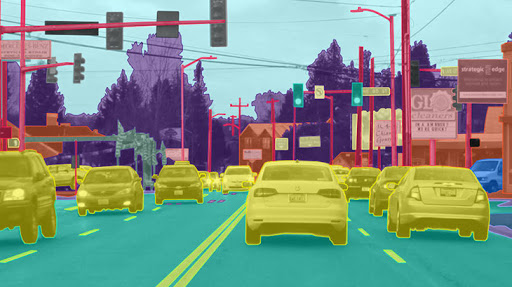
What is Data Annotation and types of Annotations?
Artificial intelligence (AI) can only be as strong as the data it is fed. Given that the quality and quantity of training data are directly related to the performance of an AI algorithm.
Huge volumes of data are not rare nowadays. However, if you want to use it to train machine learning and deep learning models, you'll have to enrich the data before you can use it for deployment, testing, and tuning. Large quantities of carefully labeled data are needed to train machine learning and deep learning models. Labeling and preparing raw data for use in machine learning models and other AI jobs is known as data labeling or data annotation.
Whether we’re talking about product recommendations and search engine results, or self-driving cars and autonomous drones, high-quality, human-powered data annotation helps build and improve machine learning applications across industries.
Data Annotation or labeling
Data labeling and annotation are the words used interchangeably to represent the art of tagging or label the contents available in various formats.
The data available in various formats are labeled with specific techniques to make it comprehensible to machines that can understand and analyze the information to give the results accordingly.
Labels are used by the human-in-the-loop to classify and make reference to features in the data. If you want to create high-performing algorithms in pattern recognition, classification, and regression, you must choose descriptive, discriminating, and independent features to label. Ground truth can be given by correctly labeled data while testing and iterating the models.
These are the features that you want your machine learning system to recognize on its own, with real-world data that hasn’t been annotated.
Types of Data Annotation
• Bounding boxes
The image is enclosed in a rectangular box, defined by x and y axes. The x and y coordinates that define the image are located on the top right and bottom left of the object. Bounding boxes are versatile and simple and help the computer locate the item of interest without too much effort. They can be used in many scenarios because of their unmatched ability in enhancing the quality of the images.
• Lines and splines
lines are used to delineate boundaries between objects within the image under analysis. Lines and splines are commonly used where the item is a boundary and is too narrow to be annotated using boxes or other annotation techniques.
• Semantic segmentation
Image segmentation is a more sophisticated type of data labeling. It means dividing our image into various parts, called segments. By dividing the image into segments, we can gain a far deeper understanding of what is happening in the image and how various objects are related.
• 3D cuboids
Cuboids are similar to the bounding boxes but with additional z-axis. This added dimension increases the detail of the object, to allow the factoring in of parameters such as volume. This type of annotation is used in self-driving cars, to tell the distance between objects.
• Polygonal segmentation
a variation of the bounding box technique. By using complex shapes (polygons) and not only the right angles of bounding boxes, the target object’s location, and boundaries are defined more accurately. Increased accuracy cuts out irrelevant pixels that can confuse the classifier. This is good for more irregular-shaped objects – cars, people, and logos, animals.
• Landmark and key-point
This involves the creation of dots around images such as faces. It is used when the object has many different features, but the dots are usually connected to form a sort of outline for accurate detection.
Natural language processing services
- Named Entity Recognition
We identify entities in a paragraph like a person, company name, location or time or any other category as per requirement.
- Part-of-speech tagging
Each part of a sentence is tagged as nouns, verbs, adjectives, adverbs, and other descriptors.
- Sentiment analysis
We can categorize the impact of a text or audio as positive, negative, or neutral or judging of a customer and other similar tasks
- Document classification
We assign tags/categories to text or documents according to the content. Text classifiers can be used to structure, organize, and categorize any text.
- Text Transcription
Our experts can transcribe audio and text, like text data can be converted to audio data for your assistant.
TagX Annotation Services
TagX offers high-quality training data by integrating our human-assisted approach with machine-learning assistance.
Our text, image, audio, and video annotations will give you the power to scale your AI and ML models. Regardless of your data annotation criteria, our managed service team is ready to support you in both deploying and maintaining your AI and ML projects.